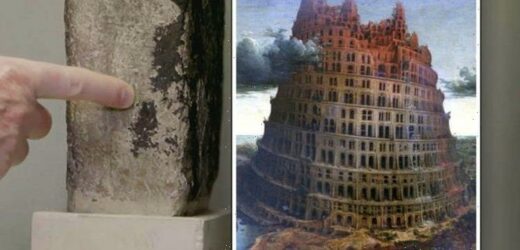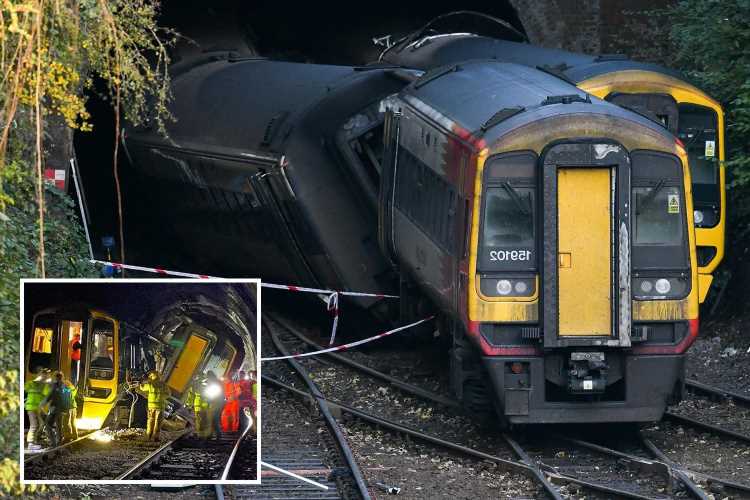Tower of Babel: Archaeologists find brick to prove existence
We use your sign-up to provide content in ways you’ve consented to and to improve our understanding of you. This may include adverts from us and 3rd parties based on our understanding. You can unsubscribe at any time. More info
The Bible contains several mysterious stories, none more so than the Tower of Babel. Its existence has eluded researchers for years: while many assert that it is merely metaphorical, others claim the tower was a real, serving structure. According to the Bible, in Genesis 11:1-9, the tower was built in the land of Shinar — Babylonia — some time after the great flood.
Increased interest and research has offered up a handful of vital clues and evidence for the tower’s existence, including some “unusual construction material” discovered on a brick believed to have once been part of the tower.
The brick was commissioned by King Nebuchadnezzar II — the man who researchers believe ordered the tower’s construction.
In a bid for world supremacy in 586 BC he stormed Jerusalem, a city 500 miles to the west, capturing its most highly-skilled and highly-educated citizens.
Their plight — and how their presence in Babylon may hint at the existence of the tower — was recalled during the Smithsonian Channel’s documentary, ‘Secrets Unlocked: Tower of Babel’.


It is believed that, as these people were brought into Babylon ‒ located in modern-day Iraq ‒ they were turned into slaves: forced to work and kept in captivity.
Some experts believe that these captive Jews witnessed the tower being built and were at first mesmerised, but soon looked at the structure as a symbol of their oppression.
Dr Irving Finkel of the British Museum said: “When you look at the early chapters of the Bible, it is clear that some of it is drawn from the Judeans’ own records, and some of it incorporates narratives which they must have encountered for the first time in Babylon, which were so powerful and striking that the authors, the philosophers who worked on the Hebrew texts, incorporated them to tell their own story.”
The documentary’s narrator noted: “There’s a compelling clue in the story that backs up a theory that Jewish slaves witnessed the tower being built during their time in captivity.”
Presenting an original Babylonian brick, found in modern-day Iraq, they continued: “It carries traces of an unusual construction material from the time: bitumen, an ancient tar, and mortar that’s specifically mentioned in the biblical tale.”
JUST IN: Another full-fibre rival has launched to rival BT and Virgin Media

Researchers know Nebuchadnezzar commissioned the brick because there’s a stamped inscription of his name on the front.
The edge of the brick is covered with a murky black: this is bitumen.
Dr Finkel said: “In the book of Genesis it literally says that they use brick for stone and bitumen for mortar; it’s expressly said there.
“What we have here is one brick and its bitumen which fits exactly into that special context.
“There can be no doubt that the stimulus for the story and the narrative must have taken shape during the Babylonian exile.”
The evidence could help to prove the existence of the Tower of Babel, its story written by a “desperate population in exile held captive by a ruthless king”.
DON’T MISS
Archaeologists blown away by DNA from mysterious Asian mummies [REPORT]
Pfizer booster shot: The ‘unexpected’ side effect after third dose [INSIGHT]
Archaeologists stunned by discovery that ‘revolutionised Bible’ [ANALYSIS]


Drawing on the research and Dr Finkel’s conclusions, the narrator said: “The destruction of the tower was their [the captives] way to rewrite history — it’s a fiction rooted in truth.”
Aside from the tower, the exact location of Babylon has also been a point of contention.
Many claim that the ancient city was within the borders of modern-day Iraq.
But, others say it was elsewhere in the Middle East.

Writing for ‘Answers in Genesis,’ Anne Habermehl argued that historical, geographical and geological analysis “shows that Shinar cannot have been in the south, but rather was a territory in what is northeastern Syria today”.
She added: ”The Tower of Babel was most likely built in the Khabur River triangle of North Syria, somewhere inside a triangle marked at its points by Tell Brak, and could not have been located anywhere in southern Mesopotamia, as has been traditionally believed.
“There is a possibility that we may yet find the actual site of the Tower of Babel, but this will require further research as well as onsite archaeological excavation.”
Regardless, the overwhelming majority of research and historical literature suggests that Babylon was located around 60 miles south of Bagdad.

The city served for nearly two millennia as a centre of Mesopotamian civilisation.
Babylon was also home to another feat of engineering said to be one of the seven wonders of the ancient world: The Hanging Gardens of Babylon.
They have gained something of a legendary status, described as resembling a large green mountain with an ascending series of tiered gardens containing a wide variety of trees, shrubs, and vines.
According to one legend, the Hanging Gardens were also built by King Nebuchadnezzar alongside a palace known as The Marvel of Mankind.
As with the Tower of Babel, it is as yet unknown if the Hanging Gardens really existed or where they were located.
Source: Read Full Article


